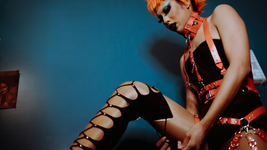Another Kind of Life: Photography on the Margins Exhibition Review - The Barbican
- Eleonora Colli
- Mar 4, 2018
- 3 min read
28th February – 27th May 2018
Standard: £13.50
Concessions: £11
Young Barbican: £5
After the success of their latest monumental exhibition, Jean Michael Basquiat: Boom for Real, The Barbican Centre calls viewers to a similarly groundbreaking and controversial art collection: Another Kind of Life: Photography on the Margins part of the Barbican’s 2018 season “The Art of Change”, is in fact a provocatory and intrinsically political display of pictures taken by twenty different artists, united by the drive to narrate the stories of marginalised groups in society during the 20th and 21st century.

Focusing on issues of gender, sexuality, race and violence; Another Kind of Life is a starkly honest and brutal portrayal of what is like to live at the outskirts of what is deemed acceptable in society. Raging from Japanese photographers such as Daido Moriyama and Seiji Kurata, to Paz Errázuriz’s portrayal of transgender sex workers under Pinochet’s dictatorship, to the representation of the Indian eunuch Mona Ahmed; the exhibition extends to the margins even in geographical terms, giving voice to the subculture of countries usually obscured by England or the United States. Iconic works such as Mary Ellen Mark’s Streetwise (1983), a document on Seattle’s dark reality focused on a street kid known as Tiny, can be explored along with less known realities, such as Pieter Hugo’s portrayal of Nigerian nomads.
All of these photographers, with their different geographical and cultural backgrounds, sexual orientation and artistic influences, focused throughout their careers in documenting the unacceptable: the eye through which categories such as sex-workers, street gangs and drag queens are viewed changes throughout the exhibition, with every room dedicated to a different artist. The representation of these characters, however, remains intrinsically personal, with the subjects always portrayed as active participants in the pictures and often staring right back at the visitor. While some photographs verge on documentary observation or a more staged reality, others, like artist Bruce Davidson says talking about his pictures, "don't do detached observation” but rather represent the nude reality of the subjects and sometimes of the photographer. When the artist is not part of the reality documented, this incites an immediate reaction in the subjects portrayed: it is hard to forget the haunting pictures of Tweeky Dave, Jim Goldberg’s main subject, paired with the text “you need me 2 feel superior I need you 2 laugh at” - a derisive slogan which seems to be addressing the viewers along with the photographer.

Another Kind of Life ties art and politics together, presenting visitors with the hidden reality of the past. With this exhibition, The Barbican joins other important London institutions, such as the Tate Modern, in promoting a more inclusive version of history, reminding the public of the existence of realities kept hidden for too long: by showcasing the lives of those who were shamed and forgotten, Another Kind of Life gives them a new voice and a renewed value. Issues of representation, however, are still to be tackled: most of the photographers engage with their subjects from a privileged position, and despite their empathy and the lack of spectacularization in their vision, the question on whether they had the right to tell these stories hangs heavily between the walls of the Barbican. Another Kind of Life leaves spectators contemplating the intricate relationship between art and politics, representation and identity, hidden lives and forgotten stories: its impact on visitors is undeniable, and the subjects presented in the photographs claim everyone’s undivided attention, holding fiercely the gaze of the visitors as if daring them to forget their stories once again.

































